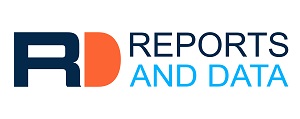
Reports And Data
Lactic Acid Market Size – USD 1.2 billion in 2020, Market Growth – CAGR of 12.5%.
NEW YORK, NY, UNITED STATES, July 22, 2022 /EINPresswire.com/ -- High demand for lactic acid and polylactic acid in end-user applications, rise in demand for alternative environment-friendly resources, and technological advancements to encourage the production of lactic acid & polylactic acid is expected to fuel the lactic acid.
Market Trends– High demand for lactic acid and polylactic acid in end-user applications, rise in demand for alternative environment-friendly resources and technological advancements to encourage the production of lactic acid & polylactic acid is expected to fuel the market in the forecast period.
According to the current analysis of Reports and Data, the global Lactic Acid Market was valued at USD 1.2 billion in 2020 and is expected to reach value of 2.5 billion by 2028, expanding at a CAGR of 12.5% during the forecast period. The global lactic acid market is highly driven by high demand for lactic acid and polylactic acid in end-user applications and rise in demand for alternative environment-friendly resources.
Lactic acid is a naturally occurring organic acid that is used in a wide range of industries, including cosmetics, pharmaceuticals, chemicals, food, and, most recently, medicine. Lactic acid can be made by the fermentation of sugar obtained from renewable resources, making it an environmentally beneficial product that has received a lot of attention in recent years.
Download sample @ https://www.reportsanddata.com/sample-enquiry-form/4164
Further key findings from the report suggest
• Based on Application, lactic acid is widely found in various food and beverages, from cheese to jellies and to carbonated beverages. The additive is widely used in the food industry to help balance the acidity of cheese and to add tartness to frozen desserts and carbonated fruit drinks. It has been used to transform cabbage into sauerkraut and milk into yogurt for centuries. The antibacterial qualities of lactic acid, as well as its capacity to lengthen shelf life, are the main reasons why food manufacturers use it in their products. It also enhances the flavour.
• Based on Form, Powder is mainly used for food, beverage as sour agent and taste regulator. Lactic acid powder is a natural L-lactic acid powder made from the fermentation of glucose. L-lactic acid and L-calcium lactate are mixed together to make it. The product is a white granule or powder with a mild and pure acidity, deliquescence, and is soluble in hot water. This is widely used as a food or feed additive, and it can enhance the flavour of food while also extending its shelf life. It is frequently used as a food taste enhancer in canned foods, bread, flour, pastry, feed, and other sectors. It is also good for regulating the acidity of a variety of solid and powder foods. Its outstanding PH value modulation function and bacteriostasis capacity efficiently limit microorganism development while extending food shelf life.
• Based on End-User, Polylactic acid can be used in agricultural applications by incorporating a timed-release fertiliser into polylactic acid sheets or moulded shapes, as well as biodegradable plant clips. Although agriculture had a low market share for polylactic acid-based products in recent years, applications such as polylactic acid-based mulch films are expected to grow in the agriculture sector. Mulch films are widely utilised in the fruit and vegetable industry. PLA has mechanical qualities equal to conventional mulch film materials, with the added benefit of being totally biodegradable in a single growing season.
• The North America market accounted for the largest revenue share in 2020, and is expected to continue with its dominance over the forecast period, owing to highly developed food and pharmaceutical industries. The rise of the US market drives the entire North American lactic acid market. The North American market is regulated, with the Environmental Protection Agency (EPA) of the United States playing a vital role in chemical product monitoring and marketing. Consumers' attention has shifted in recent years to sustainable and environmentally friendly plastics, particularly for packaging, as environmental concerns and waste management difficulties have grown. As a result of these considerations, regulatory agencies such as the Environmental Protection Agency (EPA) are increasingly favouring biodegradable plastics and emphasising the importance of raising public awareness about the need for biodegradable products.
• Key participants in the lactic acid market are Corbion (Netherlands), DuPont (U.S.), Cargill (U.S.), Galactic (Belgium), Dow (U.S), Unitika Ltd. (Japan), Henan Jindan Lactic Acid (China), Sulzer (Switzerland), Musashino Chemical (China), and Vigon International (U.S.)
Request a customization of the report @ https://www.reportsanddata.com/request-customization-form/4164
For the purpose of this study, Reports and Data have segmented Lactic Acid market on the basis of Application, Form, End-User and Region:
Application Outlook (Revenue in Million USD; 2018–2028)
• Biodegradable Polymers
• Food & Beverages
• Personal Care Products
• Pharmaceutical Products
• Others
Form Outlook (Revenue in Million USD; 2018–2028)
• Liquid
• Dry
End-User Outlook (Revenue in Million USD; 2018–2028)
• Packaging
• Fiber & Fabrics
• Automobiles
• Electronics & Electricals
• Agriculture
• Others
Regional Outlook (Revenue in Million USD; 2018–2028)
• North America
• Europe
• Asia Pacific
• Middle East & Africa
• Latin America
Buy Now @ https://www.reportsanddata.com/report-pricing/4164
Thank you for reading our report. For customization or any query regarding the report, kindly connect with us. Our team will make sure you the report best suited to your needs.
Tushar Rajput
Reports and Data
+1 212-710-1370
email us here
Visit us on social media:
Facebook
Twitter
LinkedIn

